On the 4th and 5th of August (Saturday and Sunday) the Marine National Park Headquarters organized the "Three generations exploring the South Penghu Marine National Park" event, arranging for three generations of three families a visit to the National Park on Penghu's southern islands, places accessible only by boat.
The oldest participant of this three-generation family event was 87 years old, while the youngest was only 6. Taking age and ability differences into account, the park arranged for two volunteer workers to accompany the families on their trip, in order to assist the older generation participants in getting on and off the boat and to deal with any problems that might arise.
An additional complicating factor was the climate on Dongji Island, which frequently reaches scorching temperatures between 10am and 3pm, making outdoor activities unsuitable for elderly visitors to the park during this time. For this reason, park staff paid particular attention to participants during this time, reminding them to keep drinking water and arranging places for the guests to rest in the traditional settlements on the island.
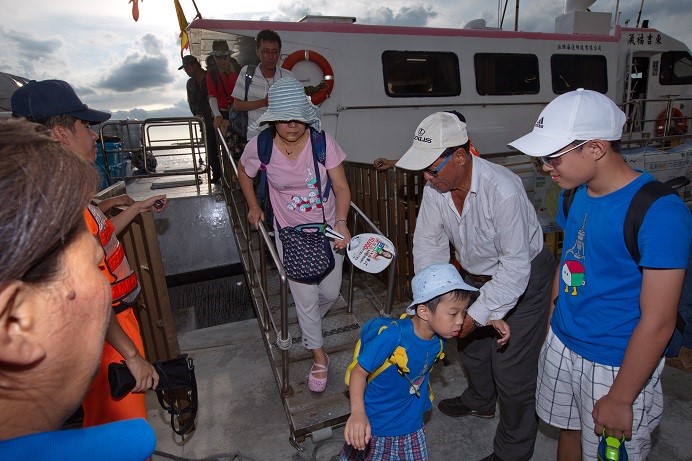
the park arranged for two volunteer workers to
accompany the families on their trip, in order to assist the
older generation participants in getting on and off the
boat and to deal with any problems that might arise.
An additional complicating factor was the climate on Dongji Island, which frequently reaches scorching temperatures between 10am and 3pm, making outdoor activities unsuitable for elderly visitors to the park during this time. For this reason, park staff paid particular attention to participants during this time, reminding them to keep drinking water and arranging places for the guests to rest in the traditional settlements on the island.
Every year from April to September is the park’s busy season, receiving approximately 20,000-30,000 visitors. However, the garbage created by such large numbers of tourists poses a problem for the islands' 20 or so residents.
As a result, the Public Relations Department of the Marine National Park and the Wang-An Township Office have continued to encourage tourists to reduce waste and take their garbage away with them to dispose of upon their return home. A visit to the island's garbage dump was arranged, with the hope that it would allow guests to understand the depth of the island's garbage problem. In its place, guests were given a talk about the environmental problems that the island faces due to tourism through which visitors were able to better understand the stress placed on the island by the garbage problem and were shown the urgency of reducing our waste production and plastic usage.
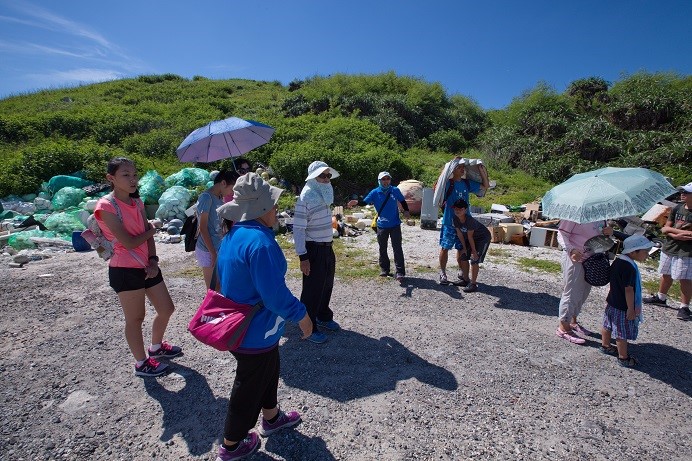
with the hope that it would allow guests to understand
the depth of the island's garbage problem.
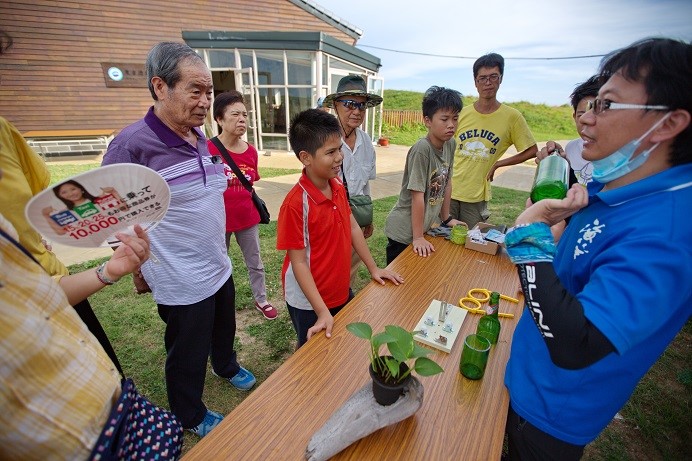
During the event, meals consisted of locally-sourced produce, giving visitors a taste of the local diet and allowing them to experience the unique cooking styles of the local islanders. Participants were also taught about local farming and fishing methods, giving them a well-rounded education in the local food culture.

local farming and fishing methods
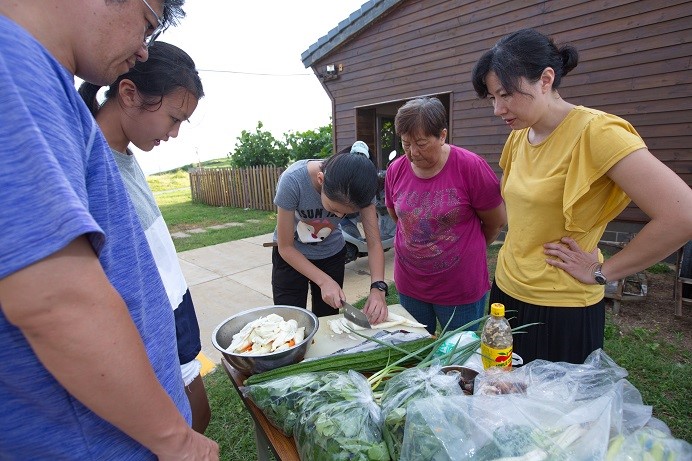
to cook creative dinner with local foods
In cooperation with the Kaohsiung City Council Social Affairs Bureau and the Kaohsiung Elderly Care Association, the Marine National Park was able to better understand each of the participating families and to plan a more suitable, interesting, and fulfilling trip—all the better to demonstrate the unique beauty and value of the National Park.
The event concluded on August 5th. Workers at the National Park were thrilled to see that the guests had already taken steps to limit their impact on the environment by bringing along their own utensils and water flasks in order to avoid creating unnecessary waste. At the "Mother Earth's Dining Table" event, elderly family members instructed the children on how to recognize and cook local produce. They also reminded the children to cherish the food on their plates and to clean up after themselves. Witnessing such warmth and consideration on display from the park guests gave this trip an extra layer of significance, and made this year's event one to remember.
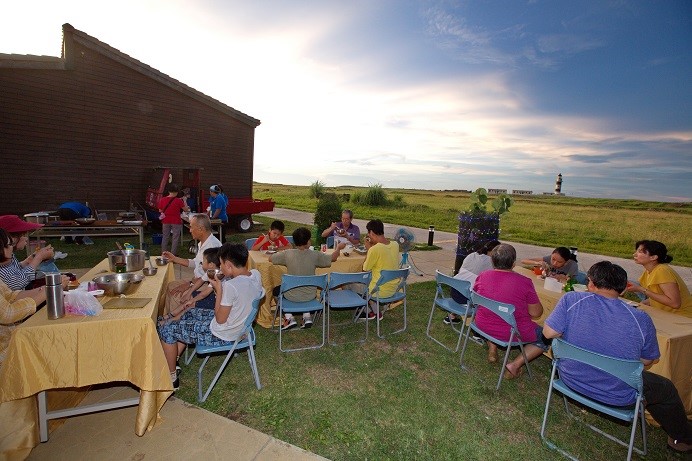
during the sunset


![Text size [Small]](/media/system/images/font_small.jpg)
![Text size [Medium]](/media/system/images/font_normal.jpg)
![Text size [Large]](/media/system/images/font_big.jpg)




